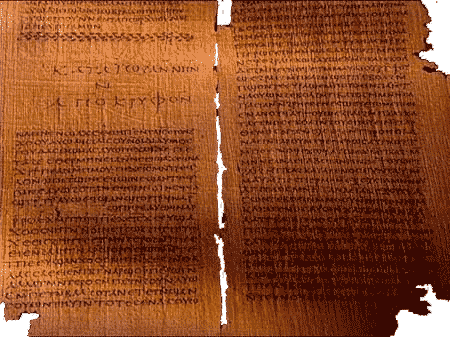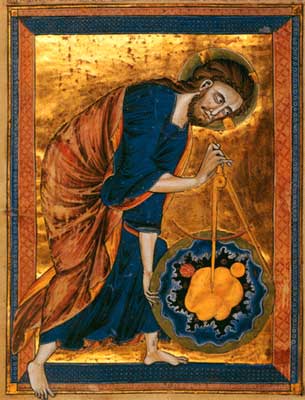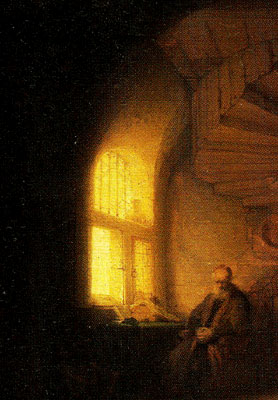 Gnosis and Gnosticism
Gnosis and Gnosticism  The Gnostics
The Gnostics
The Gnostics |

|

|
| Written by Serge Hutin | |
 In the beginning of his voluminous book against the heretics, Saint Epiphanius (dead in 403) transcribes an impressive list –and none the less, incomplete, according to what he says– of terrible sects threatening the unity of the Church: the Simonians, the Menandrians, the Saturnilites, the Basilidians, the Nicolaitans, the Estratioticans, the Ebionites, the Zacheans, the Borborites, the Barbelo-Gnostics, the Carpocratians, the Cerinthus, the Nazarenes, the Valentinians, the Ptolomeans, the Marcosians, the Ophites, the Cainites, the Sethians, the Archontics, the Cerdonians, the Marcionites, the Apellians, the Encratites, the Adamites, the Melchizedecians… (and we don’t write here the complete list of this never-ending enumeration). In all of the Fathers of the Church who fought against the Gnostics (gnostikoi, false Christians who pretended to have a marvellous knowledge or gnosis) we find the same picture: Gnostics are considered to be heretic movements which diversified ad infinitum like poisonous fungus into innumerable sects and sub-sects. Saint Irenaeus (bishop of Lyons since 177) noticed, referring to the Valentinians, that it is even “impossible to find two or three people who say the same thing about the same theme; they contradict themselves in an absolute way, they contradict as in the words as in the things”. Many historians also consider the Gnosticism as a monument of extravagant fantasies, of incoherencies, of strange myths, of phantasmagoria deprived of any philosophical interest, and which definitively constitute nothing more than a particularly degenerated branch of the disturbing religious syncretism of the first and second century of our age. Even though the point of view of the Fathers of the Church is still very extended today, the Gnosticism acquires a completely different character among the contemporary “occultists” and “theosophists”: instead of evil and delirious heretics, Gnostics are described as men who hold prestigious initiations, as people initiated in the oriental mysteries, owners of an occult knowledge that is unknown to the common mortals; a knowledge that is secretly transmitted to a limited number of “masters”; Gnosis is the total knowledge, immensely superior to the belief and the reason. Then, Gnosticism is united to the original, primordial wisdom, which is the source of all the religions. The historian of the religions keeps himself carefully away from the dogmatic or rational assumptions: his ambition is not refuting –or to demonstrating– the Gnosticism, but to study the origin and the development of the diverse historical forms of gnosis.  The extreme diversity of the Gnostic speculations is undeniable: “It would be more exact to speak of Gnosticisms than of Gnosticism.” The same diversity exists in the field of the cult and the rites, where the most ascetic tendencies oppose the most unspeakable practices: in the “mysteries” and the initiations of the Gnostics, the two opposite poles of mysticism meet again. Nevertheless it is easy to discover undeniable “family ties” among the different Gnosticisms, despite of the multiple divergences of opinion that they manifest. No matter the degree of atomization of sects and schools (which, on the other hand, is not so atomized as the heresyologists affirm, who seem to artificially have separated branches of the same group, and even have separated successive degrees of Initiation), and still considering that in the majority of the cases 5 the epithet “gnostikoi” is not used by the heretics themselves, then it is in no way arbitrary to qualify the ideas or systems which present the same characteristic tendencies as Gnostic. The modern historians –in this case going further than the heresyologists– have not hesitated to generalize the concept of Gnosis outside the boundaries of Christianity. The scientific study of Christian Gnosticism had its pioneers: Mr. Chifflet, in the 17th century: Mr. Beausobre and Mr. Mosheim in the 18th century. However, it was in the beginning of the 19th century when it developed (works by Horn, Neander, Lewald, Baur, etc.). The important work Histoire critique du Gnosticisme by Jacques Matter (Paris, 1828; reedited in Strasbourg in 1843) was during long time a classic work on Gnosticism. The author defines gnosis “as the introduction to the bosom of the Christianity of all the cosmological and theosophical speculations which had formed the most important part of the ancient religions of the Orient, and which the Neoplatonics had also adopted in the Occident”. Later on, many historians of the religions made efforts to link the origins of the Christian Gnosticism –this set of doctrines and rites which feed from a common background of speculations, images and myths– with a source which was previous to Christianity. Thus, Gnosis has been linked to Egypt, to Babylon, to Iran, to the religions of mysteries of the contemporary world, to the Greek philosophy, to the Hebrew esoterism and even to India. Far from being a spurious reflection from certain spirits about the aspects of Christianity, Gnosticism will appear to the eye of the orientalist as a phenomenon of “syncretism”, more or less by chance, between Christianity and other beliefs which are very different from Christianity. The works by the German scholars (Kessler, W. Brandt, Anz, Reitzenstein, Bousset) have in this way liberated from the perspective of the heresyology in their studies of the Christian Gnosis: “Strictly speaking, they are not immanent heresies to Christianity, but the results of an encounter and union between the new religion and the stream of ideas and feelings which existed before, or that originally were alien to Christianity and will continue to be so in their essence”.  Since about three decades ago there is the tendency to give the name “Gnostics” to other different and later streams (Manichaeism, Cathars): Gnosticisms that are externasl to Christianity (such as the Mandeanism and the Hermeticism stricto sensu); the alchemy; the Jewish Kabbalah; the Ismailism and the derived Islamic heresies; and also some modern “esoteric” doctrines. Reacting against the “comparisons”, but taking advantage of their discovering, several scholars that experts in the science of religions (Hans Jonas, Karl Kerényi, Simone Pétrement, Henri-Charles Puech, G. Quispel…) have approached to the study of Gnosticism using the phenomenological method, that is to say, instead of insisting upon the detail of the doctrines, the myths and the rites, they try to point up the specific attitude, the characteristic spiritual orientation that conditions them, and the great themes (expressed or implicit) which in the ultimate analysis are behind the ideas, the images and the Gnostic symbols. Even though the Gnosticisms are very diverse, the Gnosticism is a characteristic existential attitude, a special kind of religiosity. It is not arbitrary to formulate a general concept of Gnosis, the “saving knowledge” that results in determined human reactions which are always the same. If Gnosticism was nothing more than a series of doctrinal aberrations, belonging to certain Christian heretics from the first three centuries, its interest would be purely archeological. But it is much more than this: the Gnostic attitude will appear again spontaneously, beyond any direct transmission. This kind of special religiosity also presents bewildering affinities with some completely “modern” aspirations. The “Gnosticism” of the heresyologists constitutes the characteristic example of a religious ideology which tends to reappear incessantly in Europe and in the Mediterranean world in epochs of great political and social crisis”. The unity of gnosis postulated by the contemporary “phenomenologists” is not in any way the unity that the adepts of the theosophy and of the esoterism postulate: from this special perspective, the gnosis would be the source of all the religions and their basic foundation. To the great French “traditionalist” André René Guénon (1886-1951) and his disciples, the idea of a metaphysical liberation of man through gnosis, that is to say, through the integral knowledge, is found in all of the religions. There is a surprising universality in some symbols and in some myths, and therefore we can derive the logical postulate of a common origin of the different religious esoterisms, which necessarily are expressed through the great “exoteric” religions, whose core they are. From the point of view of the historian of religions, the theory of Guénon evidently cannot be proved (although it cannot be refuted either). It is true that the esoteric doctrines are similar; but in order to explain these convergences there is no need to postulate a primordial timeless tradition kept in one or several “centres” of initiation. It is enough to remember the law re-discovered by the “phenomenologists” about how the human spirit reacts in the same way under similar conditions. Then, it is not strange to find the same aspirations in different parts. We also have to take into account that sometimes there appear unexpected historical links. …one possesses the Gnosis, the blessed knowledge, –says Paul Masson-Oursel– when one can distinguish the absolute (in its depths) from that which makes it relative. This definition, which coincides with the one of the “traditionalists”, is too general: the salvation through the knowledge is an aspiration that characterizes many religious movements –for example, Buddhism– that are not usually included in the Gnosticism. Gnosticism is a very special kind of religiosity that somehow synthesizes the “oriental” and the “occidental” aspirations. Although it is not always true, it is usual to establish an opposition between the “metaphysical” Orient, which aspires to the liberation, and the “religious” Occident, which aspires to the salvation. Gnosticism establishes precisely a kind of link, a bridge, between the religions of a “sentimental and personal” kind and the impersonal religions called “metaphysical”. The important investigations of Henri-Charles Puech, member of the Institute, professor of the College de France, provide evidence for thinking that the Gnostic departs from a totally subjective experience, and rises until the encounter with the saving illumination  Precisely, the first part of this book will determine the general characteristics of that attitude (or rather, of a set of attitudes) through many quotes (above all taken from the Christian Gnosticism, but completed by other “testimonies”). We will highlight tendencies, aspirations and completely characteristic doctrines. In the second part we will study the history of the gnostic aspirations, from their remote pre-Christian origins until their surprising contemporary “reappearances”. The modest extension of this work hinders us from treating certain particular problems; but we believe that we have shown all of the historical and philosophical interest of the investigations concerning a field that some authors still consider to be picturesque extravagancies. Although many Gnostics speak a disconcerting language for the contemporary man, and at least at a first glance, they seem to constitute a heterogeneous set of innumerable groups, however, their attitude is very modern in its foundation: they appear as men anguished by their condition of beings that have been thrown into the world, and in their escape from this world they think they have found the way to win over their unbearable anguish. We should specify that in all the first part of this study we have followed the most essential guidelines of the Gnostic thought, as they were shown by H.-C- Puech. Full article available in spanish Comments (0)
 Write comment
|
| < Gnosis: The Saving Knowledge | The Tiger Knights > |
|---|
| Science |
| Art |
| Philosophy |
| Mysticism/Religion |
| Barbelo: Gnosis Magazine |